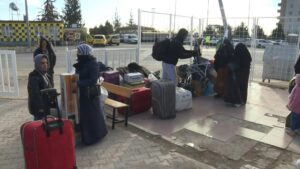Millions of East Africa refugees face ‘desperate future’: UN
NAIROBI, Kenya – Millions of refugees and displaced people in East Africa are facing a “desperate future” due to “conflict, climate shocks and COVID-19, combined with spiraling costs of food and fuel,” UN agencies have warned.
Along with the number of refugees in need of support, the gap between resourcing and needs has also grown, meaning more than 70% of refugees in East Africa do not get a full ration, according to the World Food Program (WFP) and the UN High Commissioner for Refugees (UNHCR).
The number of refugees in East Africa has nearly tripled in the past 10 years, surging from 1.82 million in 2012 to almost 5 million currently, including 300,000 new refugees last year alone, the UN agencies said in a joint statement.
The region has Uganda, which hosts 1.6 million refugees and asylum seekers, the most in Africa and the third-largest figure anywhere in the world.
Sudan and Ethiopia with 1.1 million and 837,000 refugees and asylum seekers, respectively, are next in East Africa, followed by Kenya (547,000), South Sudan (340,000), Tanzania (248,000), Rwanda (122,000), Burundi (86,000) and Djibouti (35,000), according to UN data.
Stretched humanitarian resources have forced aid groups to slash food rations, putting more and more children below the age of five at the risk of stunting and wasting, said Clementine Nkweta-Salami, UNHCR’s regional bureau director for the East, Horn of Africa and the Great Lakes.
“Families do not know where their next meal will come from and are taking on huge debt, selling off what they can, or sending their children to work,” she said.
“The risk of domestic violence is rising. Getting people out of harm’s way and shielding them from serious protection risks also requires that their food needs are adequately addressed.”
The worsening climate crisis is compounding the situation for refugees in East Africa, where conflict-caused displacement, rising fuel and food costs have already left many vulnerable, the statement said.
Drought and floods have become more severe, frequent and intense, especially impacting food security in countries such as Ethiopia, Kenya, Somalia, South Sudan and Sudan.
East Africa is facing “a year of unprecedented humanitarian needs, driven by severe climate shocks, ongoing conflict and instability, and surging food and fuel prices,” said Michael Dunford, WFP’s regional director for the region.
The statement said the WFP needs $226.5 million to provide full rations for refugees across East Africa from April to September 2022.












